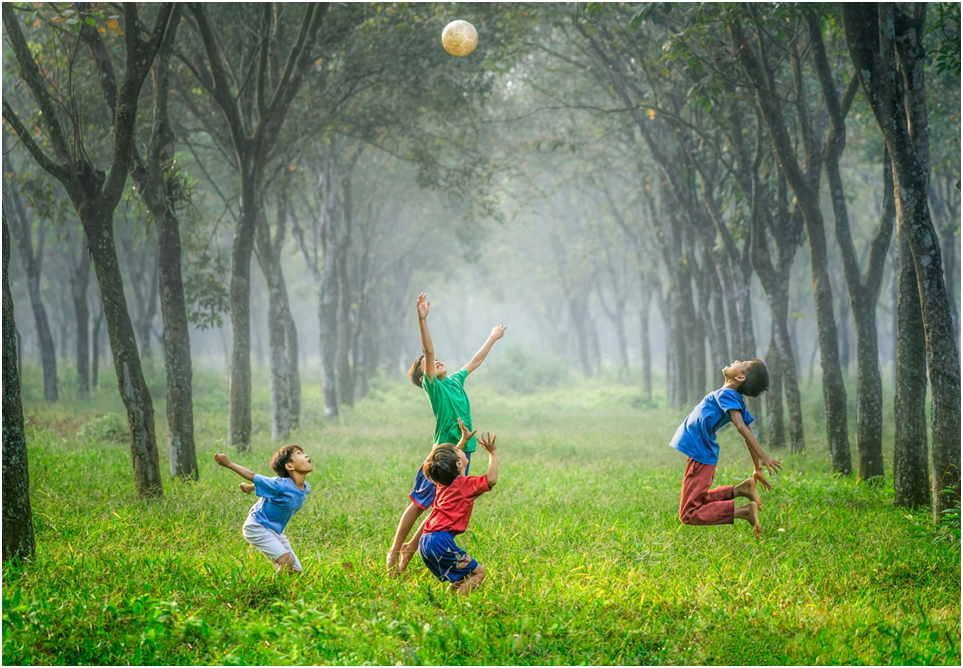Progressive Flat Foot in Children: Is it a silent epidemic?
- Ram Nayak
- Sep 25, 2024
- 3 min read
Children are born with flexible feet with no arch, however it progressively develop a medial longitudinal arch within first 10 years of his/ her early age, though, in spite of multiple studies, it is still not clear when this growth/ development is ceased. Hence, foot posture with respect to pediatric foot is a misleading concept as no two foot can be fully compared [1]. In general consensus, if the arch is not being developed by age of 5-6, it may a factor of consideration. In most cases, flatfoot deformity is flexible and will not cause pain or disability; it is a normal variant of foot shape however, a flatfoot condition with a contracture of the Achilles tendon may be painful [2].
Studies have shown that flat feet among children is typically common, for which its prevalence could be as high as 58% to 94% (particularly among obese children), meanwhile the flat feet prevalence among adulthood could fluctuate between 2.2% to 59% [3]. The question is whether this condition is growing as silent epidemic due to significant change in lifestyle. Children with flat feet often have a lower quality of life and a higher body mass index (BMI) than their peers. If left untreated, flat feet in children can lead to adult-acquired flat foot deformity, characterised by a gradual loss of the arch, weakness, and an inability to stand on tiptoes. The progressive flat feet is accompanied by Arch pain, heel pains, muscle cramps within foot, lower back pain or knee pain, leg fatigue and eventually lead to shoulder pains with loss of spinal alignment.
Patients typically experience pain while walking or running. The pain might be acute and localized to a broad, spreading ache. Pain is not a common complaint among children, but fatigue is. If your child struggles to keep up with their peers on the playground or gets tired easily when walking a long distance, this could be a sign that they have flat feet. Earlier it is diagnosed; easily one can recover from it.
Most importantly play without shoes in natural environment- it will provide natural exercise to arch & make it stronger (see pic) and use orthotic inserts (like Medigel® Inserts for Arch Care) in their school shoes, as arch support is necessary to reduce discomfort ensuring participation of children in physical activities like sports and keep their body weight in check. This is first stage intervention to manage the growing menace. The physical therapy, bracing or even surgical procedures are warranted if the flat feet is getting rigid otherwise it remained harmless. This reduces the probability of occurrence of adult flat feet too. Parents need to keep an eye on your kiddo’s feet! If he/ she is indulged in actively in physical / outdoor sports and not feeling extremely tired, you are fine otherwise take necessary steps, yes, it can be managed- so Don’t Worry! But Be Cautious!
References:
1. Hayley Uden, Rolf Scharfbillig & Ryan Causby. The typically developing paediatric foot: how flat should it be? A systematic review. Journal of Foot and Ankle Research volume 10, Article number: 37 (2017). The typically developing paediatric foot: how flat should it be? A systematic review | Journal of Foot and Ankle Research | Full Text (biomedcentral.com)
2. Flatfoot Deformity in Children and Adolescents: Surgical Indications and Management. Flatfoot Deformity in Children and Adolescents: Surgical Indications and Management. - Post - Orthobullets
3. Salinas-Torres VM, Salinas-Torres RA, Carranza-Garcia LE, Herrera-Orozco J, Tristán-Rodríguez JL.. Prevalence and Clinical Factors Associated With Pes Planus Among Children and Adults: A Population-Based Synthesis and Systematic Review. The Journal of Foot and Ankle Surgery. Volume 62, Issue 5p899-903September-October, 2023. Prevalence and Clinical Factors Associated With Pes Planus Among Children and Adults: A Population-Based Synthesis and Systematic Review - The Journal of Foot and Ankle Surgery (jfas.org)






Comments